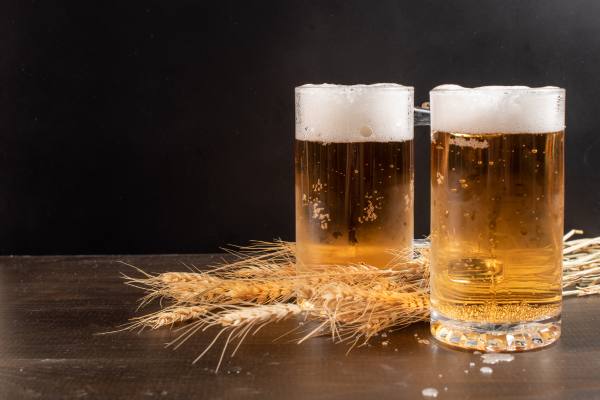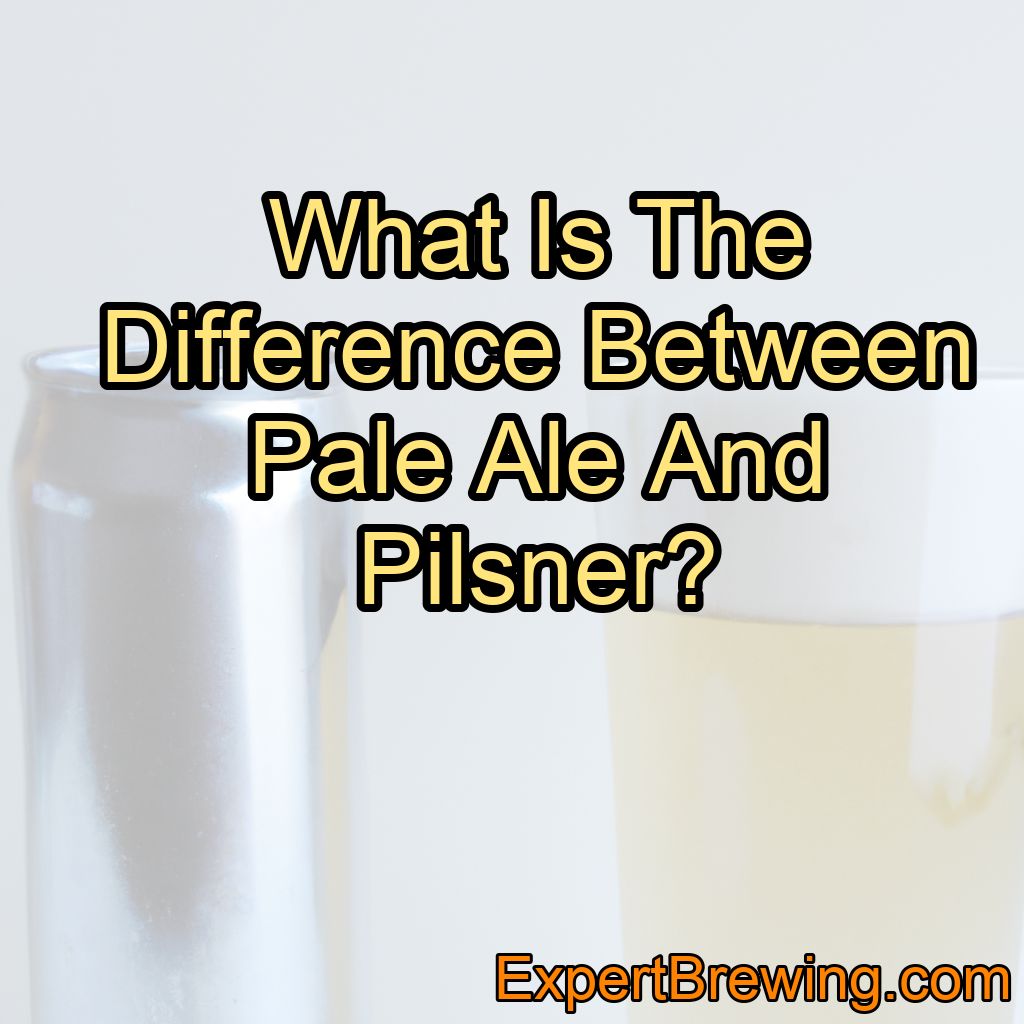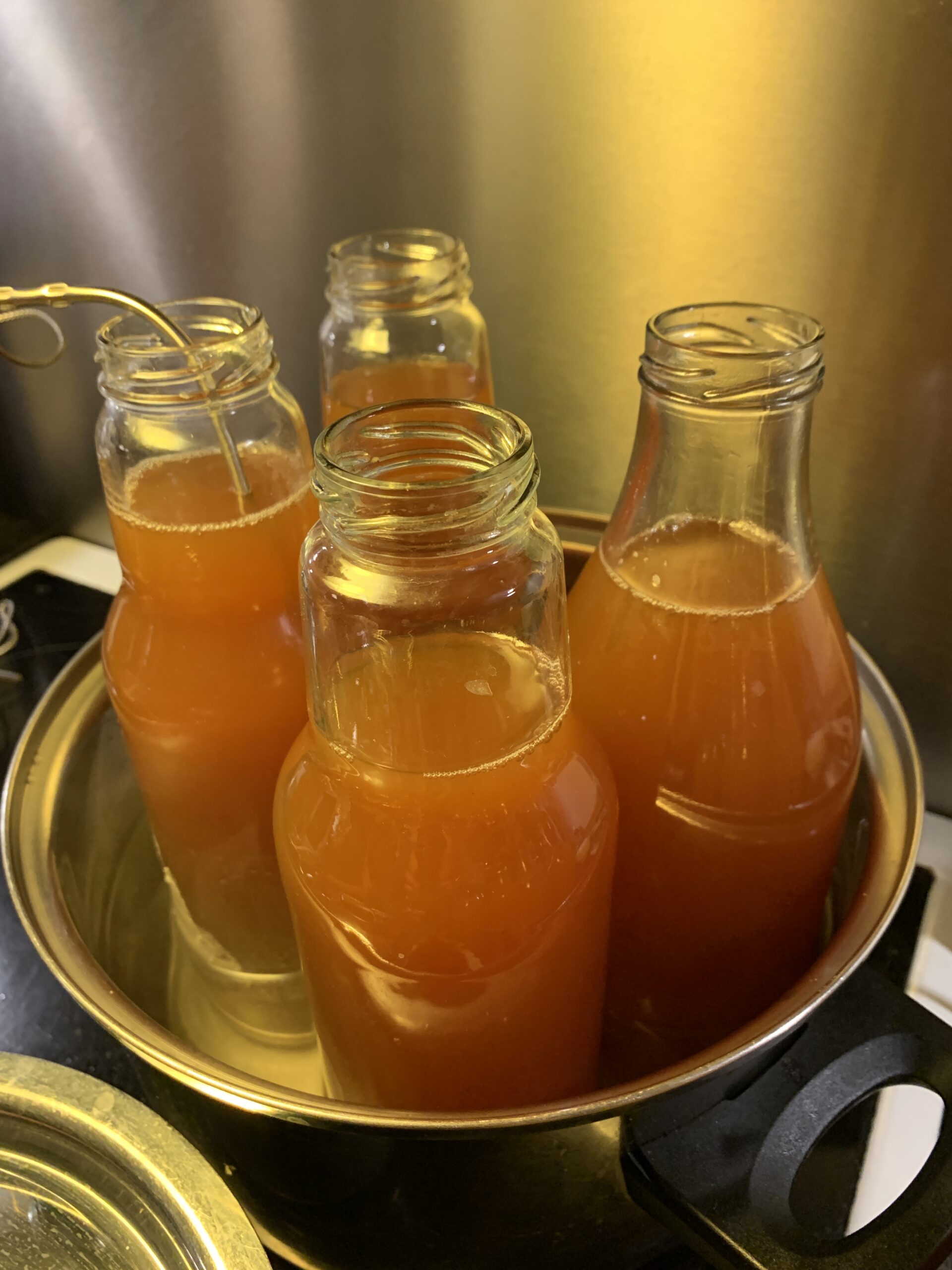Beer is a popular beverage enjoyed by many around the world. It comes in a variety of styles, each offering its unique flavors and characteristics.
Two popular styles of beer are pale ales and pilsners. Although they may seem similar to the untrained palate, there are distinct differences between the two.
The main difference between pale ale and pilsner is that pale ale is a more hop-forward beer with a robust flavor profile, while pilsner is a lighter beer with a more delicate flavor profile.
In this blog post, we will explore the differences between pale ale and pilsner by discussing their histories, brewing processes, ingredients, flavors, and more.
1. History and Origin
Pale Ale
Pale ales originated in England during the 18th century. These beers were made using pale malts, which resulted in a lighter color compared to the darker ales of that time. The term “pale ale” was originally used to describe any beer made with these pale malts, but it has since evolved to describe a specific style of hoppy, amber-colored beer.

Pilsner
Pilsner, on the other hand, originated in the Czech Republic in the mid-19th century. The city of Pilsen, where the beer style gets its name, was known for producing a light, clear, and refreshing beer. The first pilsner was brewed in 1842 by Josef Groll, who combined local ingredients with new brewing techniques to create a unique and flavorful beer. The popularity of pilsner quickly spread throughout Europe and eventually to the rest of the world.
2. Brewing Process
Pale Ale
Pale ales are brewed using top-fermenting ale yeast, which ferments at a higher temperature than the yeast used for pilsners. This results in a faster fermentation process and often contributes to the fruity and estery flavors found in pale ales.
The brewing process for pale ales typically involves the use of pale malts, which give the beer its light color and body, and a variety of hops, which contribute to its characteristic hoppy flavor and aroma.
Pilsner
Pilsners are brewed using bottom-fermenting lager yeast, which ferments at a lower temperature than ale yeast. This slower fermentation process results in a cleaner and crisper taste.
Pilsners are typically brewed with pilsner malt, which contributes to their pale color and delicate malt flavor. The hops used in pilsners are often noble hops, such as Saaz, which provide a subtle and balanced bitterness.
3. Ingredients
Pale Ale
- Pale malts: These provide the base for the beer and contribute to its light color and body.
- Specialty malts: These can be added to create more complex flavors and aromas, as well as to adjust the color and body of the beer.
- Hops: A variety of hops can be used in pale ales, each contributing unique flavors and aromas. Popular hops for pale ales include Cascade, Centennial, and Citra.
Pilsner
- Pilsner malt: This is the primary malt used in pilsners, providing the beer with its pale color and delicate malt flavor.
- Noble hops: These hops, such as Saaz, are used for their subtle and balanced bitterness, as well as their unique aromas.
4. Flavor Profiles
Pale Ale
Pale ales are characterized by their robust and hop-forward flavor profiles. They often feature flavors and aromas of citrus, pine, and floral notes, as well as a moderate malt backbone. The bitterness in pale ales can range from moderate to high, depending on the specific style and the brewer’s intentions.
Pilsner
Pilsners are known for their light and delicate flavor profiles. They typically have a crisp and clean taste with subtle malt flavors and a balanced bitterness from the noble hops. Pilsners may also feature light floral or spicy hop aromas.
5. Color and Appearance
Pale Ale
Pale ales typically have a light amber to copper color, with a clear to slightly hazy appearance. They often have a moderate to high level of carbonation and may feature a frothy, off-white head.

Pilsner
Pilsners are characterized by their pale straw to light gold color, with a crystal-clear appearance. They have a high level of carbonation, which creates a thick, white, and persistent head.
6. Alcohol Content
Pale Ale
The alcohol content of pale ales can vary greatly depending on the specific style and the brewer’s intentions. Most pale ales have an alcohol by volume (ABV) range of 4-6%, with some styles, such as Imperial or Double Pale Ales, reaching up to 8-10%.
Pilsner
Pilsners typically have a lower alcohol content than pale ales, with an average ABV range of 4-5%. This lighter alcohol content contributes to the refreshing and easy-drinking nature of pilsners.
7. Food Pairings
Pale Ale
The robust and hoppy flavors of pale ales pair well with a variety of foods. Some popular pairings include grilled meats, spicy dishes, and bold, flavorful cheeses. The bitterness in pale ales can also help cut through the richness of fatty or fried foods.
Pilsner
Pilsners are versatile when it comes to food pairings, thanks to their light and delicate flavors. They pair well with dishes such as seafood, light salads, and mild cheeses. Pilsners can also serve as a palate cleanser between bites of more intensely flavored dishes.
8. Popular Examples
Pale Ale
- Sierra Nevada Pale Ale
- Bell’s Two Hearted Ale
- Stone IPA
Pilsner
- Pilsner Urquell
- Victory Prima Pils
- Lagunitas Pils
9. Versatility and Availability
Pale Ale
Pale ales are widely available and come in a variety of styles, making it easy to find one that suits your taste preferences. Their bold and hoppy flavors make them a popular choice among craft beer enthusiasts.
Pilsner
Pilsners are also widely available and can be found in many variations, from classic Czech-style pilsners to more modern interpretations. Their light and refreshing nature makes them a popular choice for those looking for an easy-drinking beer.
Conclusion
In conclusion, the main difference between pale ale and pilsner is that pale ale is a more hop-forward beer with a robust flavor profile, while pilsner is a lighter beer with a more delicate flavor profile. Here are 10 key facts to remember about these two popular beer styles:
1. Pale ales originated in England, while pilsners originated in the Czech Republic.
2. Pale ales are brewed with top-fermenting ale yeast, while pilsners are brewed with bottom-fermenting lager yeast.
3. Pale ales use pale malts and a variety of hops, while pilsners use pilsner malt and noble hops.
4. Pale ales have a robust and hoppy flavor profile, while pilsners have a light and delicate flavor profile.
5. Pale ales have a light amber to copper color, while pilsners have a pale straw to light gold color.
6. Pale ales have a higher alcohol content than pilsners, with an average ABV range of 4-6% (or higher for some styles).
7. Pale ales pair well with grilled meats, spicy dishes, and bold cheeses, while pilsners pair well with seafood, light salads, and mild cheeses.
8. Popular examples of pale ales include Sierra Nevada Pale Ale, Bell’s Two Hearted Ale, and Stone IPA, while popular examples of pilsners include Pilsner Urquell, Victory Prima Pils, and Lagunitas Pils.
9. Both pale ales and pilsners are versatile and widely available, making it easy to find a beer that suits your taste preferences.
10. The key difference between pale ale and pilsner is the balance between hops and malt, with pale ales being more hop-forward and pilsners being more malt-forward.
FAQs
What beer is a pilsner?
Pilsner is a type of beer that originated in the Czech Republic and is characterized by its light color, crisp taste, and hoppy aroma.
What is the difference between a pilsner and a lager?
A pilsner is a type of lager that is characterized by its light color, crisp taste, and hoppy aroma. Therefore, the main difference between a pilsner and a lager is that pilsner is a specific style of lager, while lager is a more general term that refers to any beer that is brewed using bottom-fermenting yeast and is typically aged for several weeks or months.
Is Coors Light a pilsner or lager?
Coors Light is a lager.
Is Budweiser a pilsner beer?
Yes, Budweiser is a pilsner beer.
Is Bud Light a lager or pilsner?
Bud Light is a lager.




